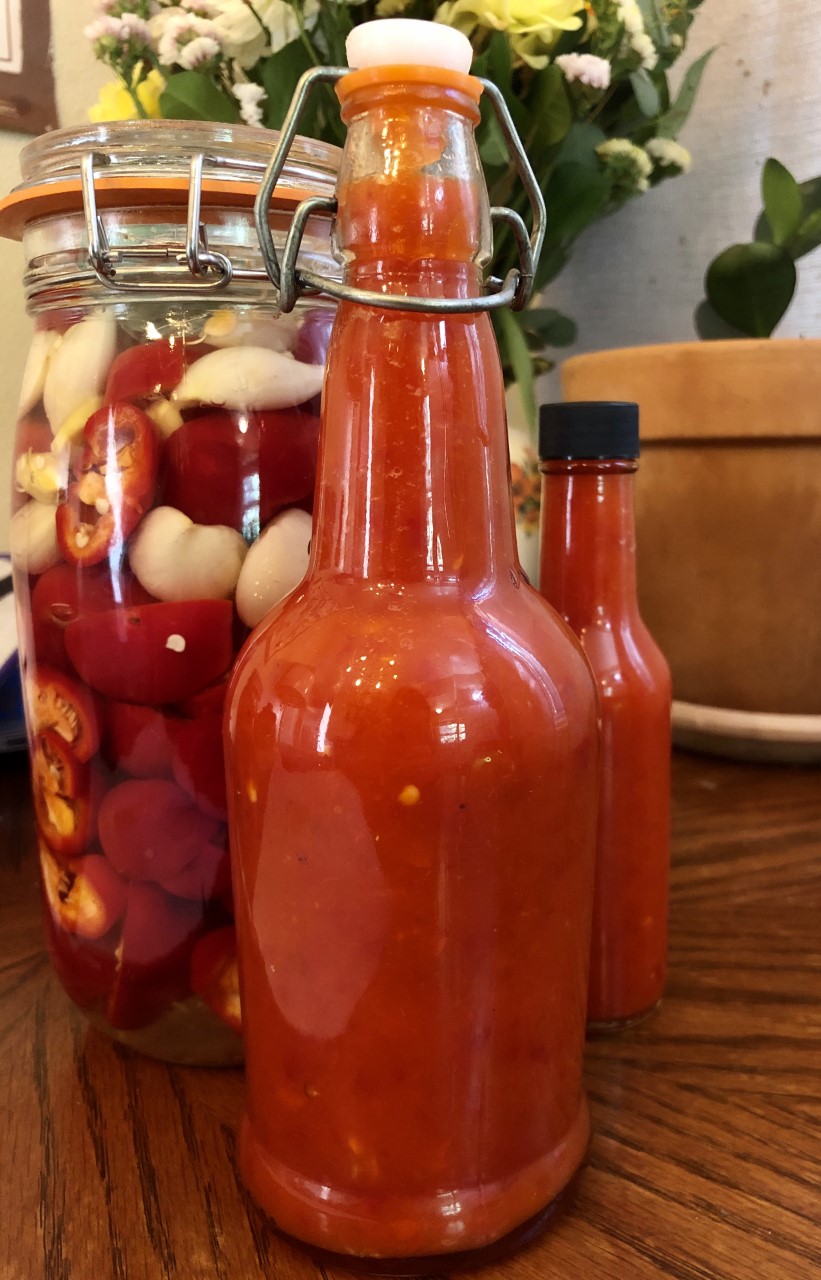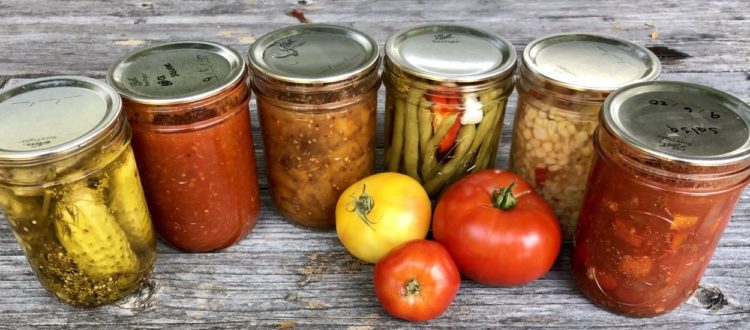Preservation Party
September is a magical month full of fruits and vegetables ranging from hot weather nightshades to fall-type brassicas. For the past month I have been overjoyed by the abundance of the late summer harvest found at the farmers market. Each week I can’t help but purchase pounds of tomatoes, bags of hot peppers, bunches of basil and boxes of peaches. I have always enjoyed the art of preserving foods and recently went to town after picking up a Ball Jar company canning book from a garage sale. The possibilities seemed endless and I went to work right away.
Food preservation carries the nutrients of summer into the winter months and is a popular and necessary practice of animals around the world. There are many ways to help produce keep well after harvest and enjoy fruits and veggies when the frosts come and the only thing growing outside is cover crop:
- Fermentation: One of the older techniques that keeps fruits and vegetables edible (and delicious) with the use of lactic acid produced by good bacteria.
- Canning: Creates a sterile environment that keeps oxygen and harmful microbes out, preserving foods without refrigeration.
- Refrigeration/Freezing: The simplest way to keep produce, freezing produce and keeping quick pickles fresh in the refrigerator is an easy way to extend their life.
- Drying: Methods include laying thinly cut produce on baking sheets or racks to air dry, oven drying at low heat or by using an electric dehydrator.
Each technique is straightforward once you understand the guidelines. By using these preservation methods and approved recipes, I have saved many pounds of produce for my winter and spring consumption.
Heartier veggies are my go-to for easy ferments. Cabbages (experiment with green, purple and napa varieties), radishes (try daikon, watermelon and black), carrots and beets are some of my favorites to transform into a probiotic rich side dish or condiment. A simple saltwater brine can be used to cover the chopped veggies in a sterilized jar to start your fermentation process.
 One of my favorite fruits to ferment are hot peppers. I grab a couple of pounds of cherry bombs, jalapenos, Serrano, chile de agua and Anaheim peppers from our farmers almost every week. I’ll ferment them along with garlic and carrots for about two weeks. These peppers blended together along with vinegar make a delicious hot sauce that keeps well in the fridge. Alternatively, you can preserve your sauce using water bath canning.
One of my favorite fruits to ferment are hot peppers. I grab a couple of pounds of cherry bombs, jalapenos, Serrano, chile de agua and Anaheim peppers from our farmers almost every week. I’ll ferment them along with garlic and carrots for about two weeks. These peppers blended together along with vinegar make a delicious hot sauce that keeps well in the fridge. Alternatively, you can preserve your sauce using water bath canning.
With the season’s bounty of ripe tomatoes, I made a barbeque sauce for next spring’s cookouts and salsa for winter’s dip needs. Bruised peaches were used to create a jalapeno jam and a peach chutney to top meats and crackers. A variety of seasonal produce turned into dill pickles for our future Bloody Mary cravings and fancy charcuterie boards. Ears of corn transformed into corn relish for chip scooping and chili topping. These were all simply canned using a large stock pot, boiling water and glass jars with new lids.
While waiting on ferments, quick pickled peppers is an easy addition to meals in the late summertime. I most often refer to the Portland Farmers Market Cookbook for this one:
Pickled Peppers – makes about ½ cup
- 1 Jimmy Nardello or similar sweet Italian frying pepper, halved, seeded, and thinly sliced
- ½ cup champagne vinegar or white wine vinegar
- 2 tablespoons sugar
- 2 teaspoons kosher salt
- 1 teaspoon red pepper flakes
- Directions: Put the peppers in a small glass bowl. In a nonreactive saucepan over medium heat, bring the vinegar to a boil with the sugar, salt and pepper flakes. Pour the hot liquid over the peppers, cover lightly, and leave overnight at room temperature to pickle.
The plentiful fruits found at the farmers market and on our neighborhood trees can easily convert into year-round snacks. Dehydrating late-summer plums has become an annual pastime in our house. We enjoy eating these prunes ourselves and giving them as holiday gifts – I kid you not, prunes are a hit. As one of our go-to references exclaims: dry it, you’ll like it!
The harvest bounty is now and it’s time to start your preservation journey. Support small farms and keep summer alive with preserved jams, sauces, pickles and ferments. Find resources below to help you create your own preservation pantry for the months ahead!
Resources
https://extension.oregonstate.edu/food/preservation – safety, recipes and general resources.
https://foodinjars.com/ – recipes for and canning methods.
https://nchfp.uga.edu/ – National Center for Home Food Preservations – wide variety of info, well organized.
https://tasteforlife.com/living/eco-home/preserve-your-fall-harvest – helpful for freezing and dehydrating.

